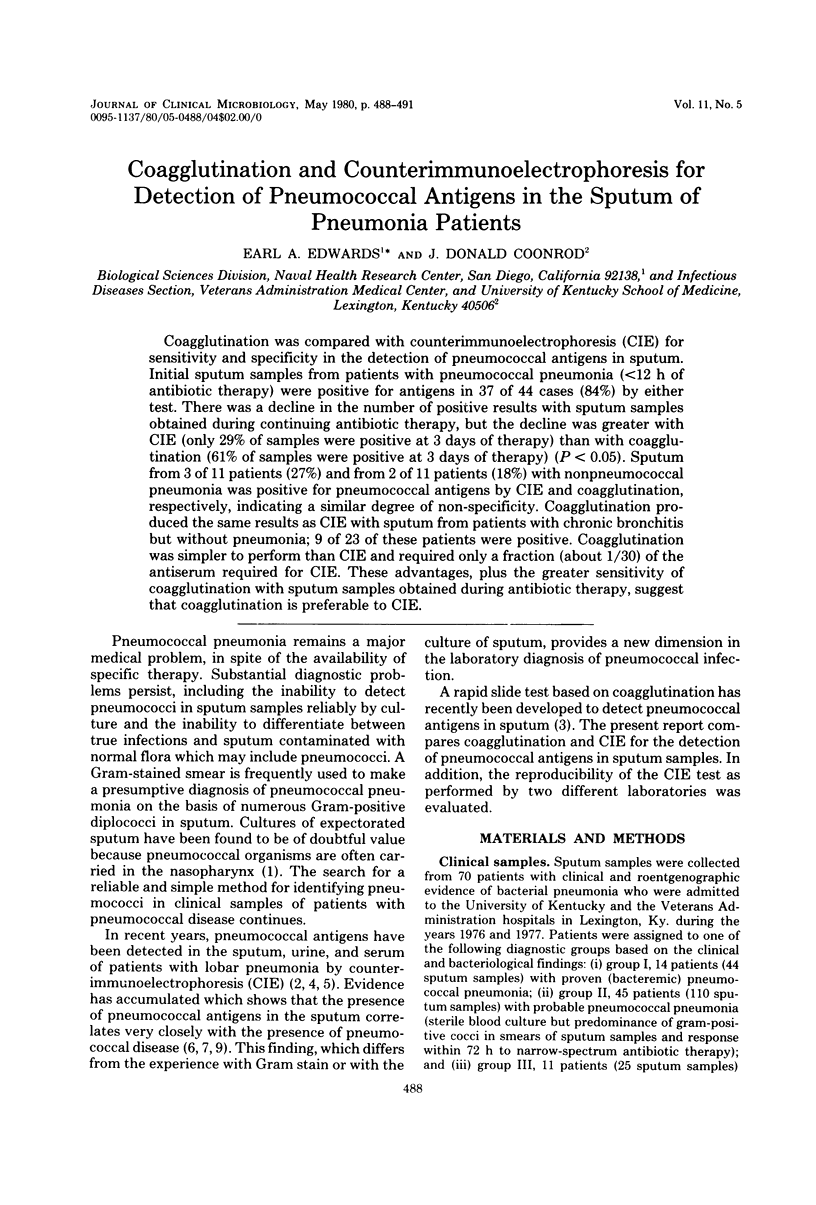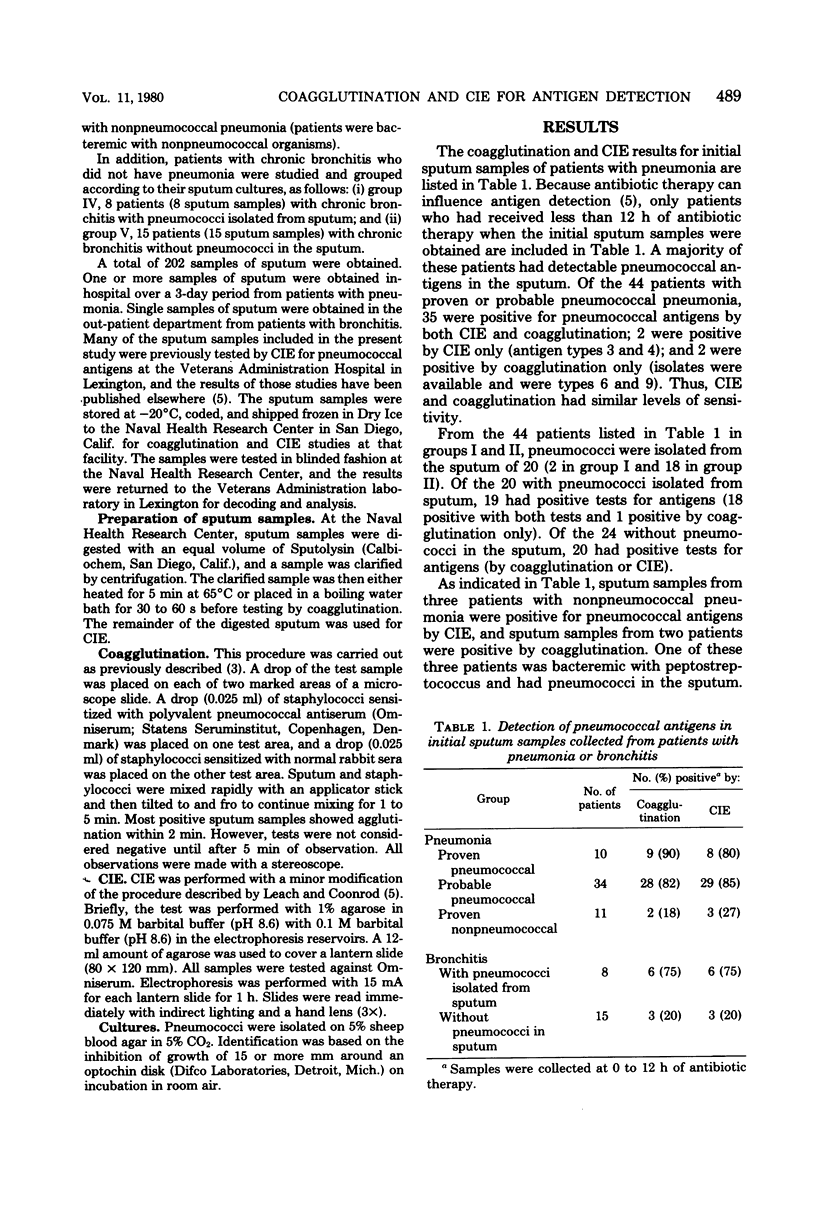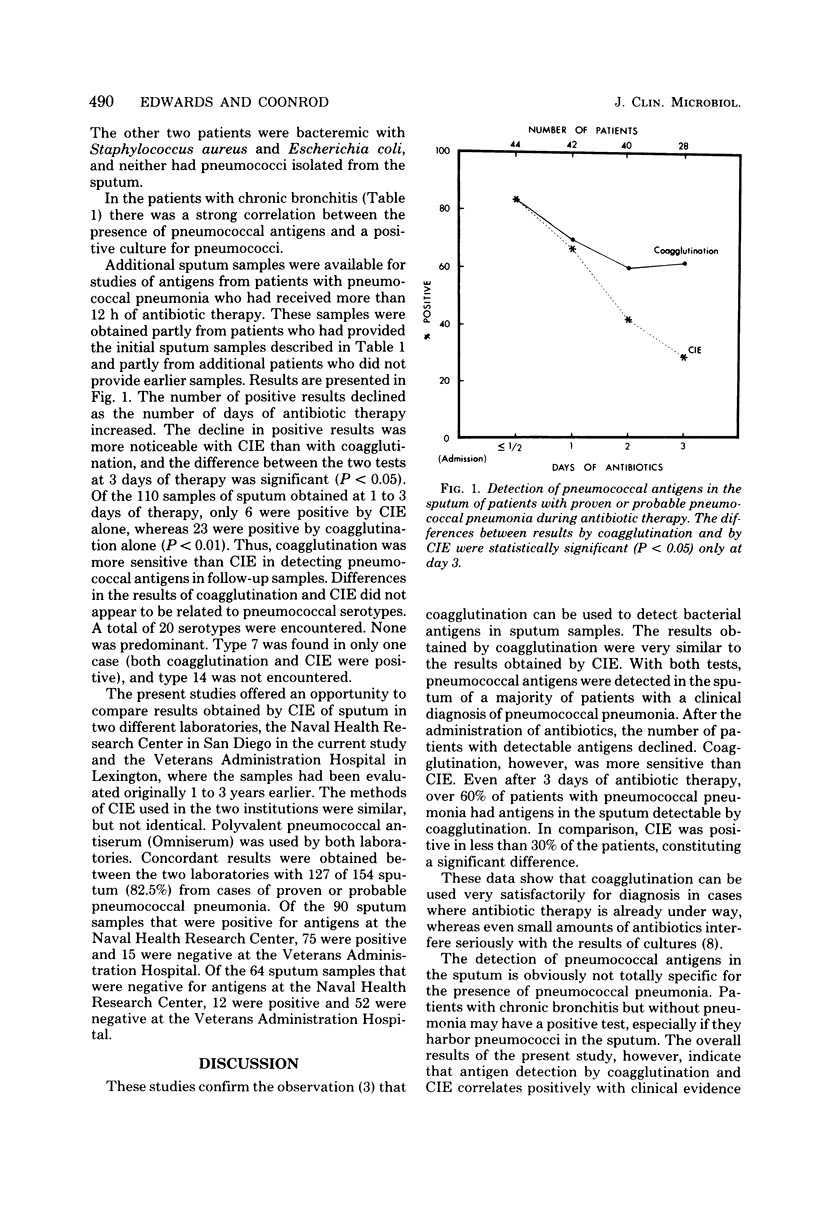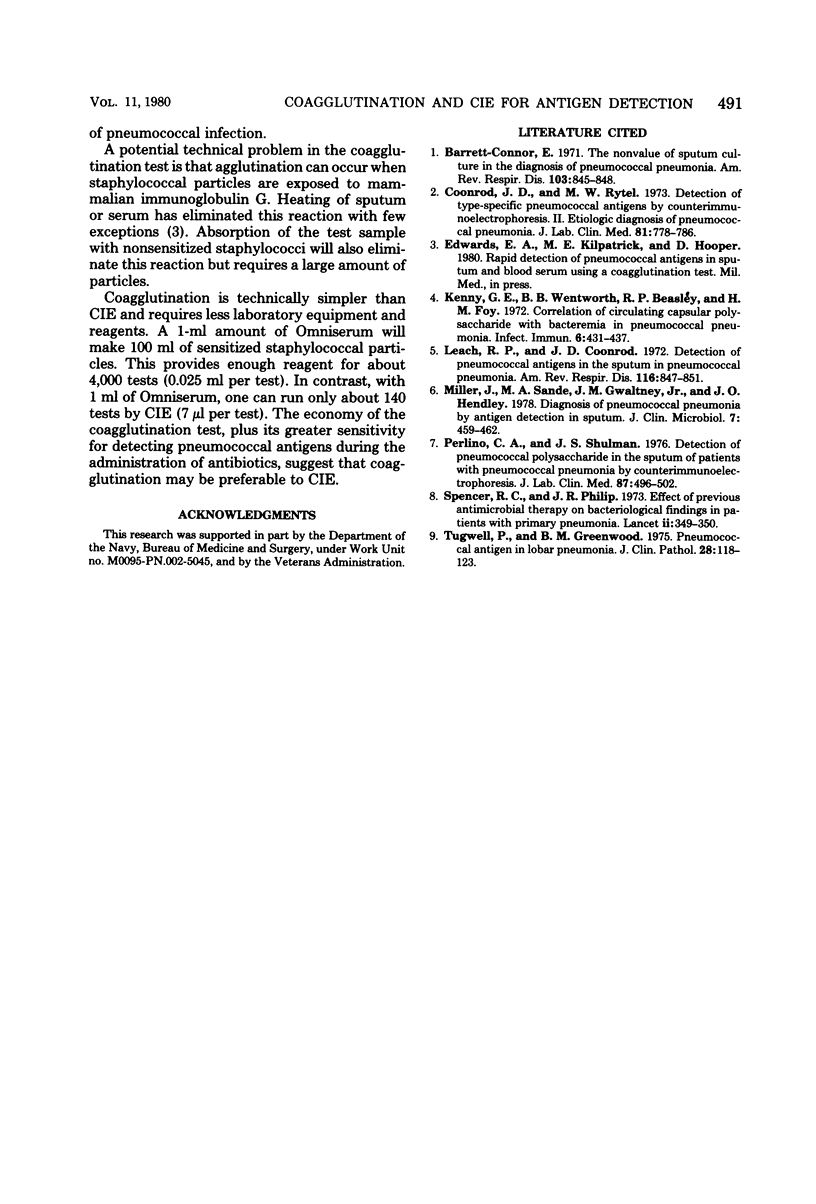Abstract
Coagglutination was compared with counterimmunoelectrophoresis (CIE) for sensitivity and specificity in the detection of pneumococcal antigens in sputum. Initial sputum samples from patients with pneumococcal pneumonia (less than 12 h of antibiotic therapy) were positive for antigens in 37 of 44 cases (84%) by either test. There was a decline in the number of positive results with sputum samples obtained during continuing antibiotic therapy, but the decline was greater with CIE (only 29% of samples were positive at 3 days of therapy) than with coagglutination (61% of samples were positive at 3 days of therapy) (P less than 0.05). Sputum from 3 of 11 patients (27%) and from 2 of 11 patients (18%) with nonpneumococcal pneumonia was positive for pneumococcal antigens by CIE and coagglutination, respectively, indicating a similar degree of non-specificity. Coagglutination produced the same results as CIE with sputum from patients with chronic bronchitis but without pneumonia; 9 of 23 of these patients were positive. Coagglutination was simpler to perform than CIE and required only a fraction (about 1/30) of the antiserum required for CIE. These advantages, plus the greater sensitivity of coagglutination with sputum samples obtained during antibiotic therapy, suggest that coagglutination is preferable to CIE.
Full text
PDF



Selected References
These references are in PubMed. This may not be the complete list of references from this article.
- Barrett-Connor E. The nonvalue of sputum culture in the diagnosis of pneumococcal pneumonia. Am Rev Respir Dis. 1971 Jun;103(6):845–848. doi: 10.1164/arrd.1971.103.6.845. [DOI] [PubMed] [Google Scholar]
- Coonrod J. D., Rytel M. W. Detection of type-specific pneumococcal antigens by counterimmunoelectrophoresis. II. Etiologic diagnosis of pneumococcal pneumonia. J Lab Clin Med. 1973 May;81(5):778–786. [PubMed] [Google Scholar]
- Kenny G. E., Wentworth B. B., Beasley R. P., Foy H. M. Correlation of circulating capsular polysaccharide with bacteremia in pneumococcal pneumonia. Infect Immun. 1972 Oct;6(4):431–437. doi: 10.1128/iai.6.4.431-437.1972. [DOI] [PMC free article] [PubMed] [Google Scholar]
- Leach R. P., Coonrod J. D. Detection of penumococcal antigens in the sputum in pneumococcal pneumonia. Am Rev Respir Dis. 1977 Nov;116(5):847–851. doi: 10.1164/arrd.1977.116.5.847. [DOI] [PubMed] [Google Scholar]
- Miller J., Sande M. A., Gwaltney J. M., Jr, Hendley J. O. Diagnosis of pneumococcal pneumonia by antigen detection in sputum. J Clin Microbiol. 1978 May;7(5):459–462. doi: 10.1128/jcm.7.5.459-462.1978. [DOI] [PMC free article] [PubMed] [Google Scholar]
- Perlino C. A., Shulman J. A. Detection of pneumococcal polysaccharide in the sputum of patients with pneumococcal pneumonia by counterimmunoelectrophoresis. J Lab Clin Med. 1976 Mar;87(3):496–502. [PubMed] [Google Scholar]
- Spencer R. C., Philp J. R. Effect of previous antimicrobial therapy on bacteriological findings in patients with primary pneumonia. Lancet. 1973 Aug 18;2(7825):349–350. doi: 10.1016/s0140-6736(73)93192-9. [DOI] [PubMed] [Google Scholar]
- Tugwell P., Greenwood B. M. Pneumococcal antigen in lobar pneumonia. J Clin Pathol. 1975 Feb;28(2):118–123. doi: 10.1136/jcp.28.2.118. [DOI] [PMC free article] [PubMed] [Google Scholar]


